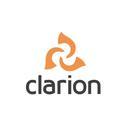
Clarion
Clarion aims to give everyone in the world the tools to broadcast their message to everyone who wants to hear their message without creating dependencies on centralized infrastructure. It will achieve this with a censorship resistant "friend to friend" network which will leverage the unused resources of your friends and family to distribute your content. The ultimate goal is to provide the performance and reliability of a "centralized service" with the freedom and independence of a logically decentralized network. With the help of the Clarion community we can free our friends and family from the tyranny of Twitter, Facebook, YouTube, Amazon, Apple and Google and produce a social network free from manipulation and 3rd party dependence. Clarion learns lessons from other projects, including RetroShare, Hive (previously SteemIt ), and Voice. RetroShare is far closer to the desired level of decentralization, but has a clunky interface that isn't viable on mobile. Meanwhile, blockchain based networks are "logically centralized" and require all full nodes to process all transactions. This is not suitable for home users at scale and creates dependencies on a small number of web portals. One of the more successful decentralized protocols is IPFS and IPNS. These P2P protocols facilitate the publishing of location independent websites; however, they have a couple of drawbacks. Among these drawbacks are the need to keep your own node online in order to seed your content -- there is no free way to "push to IPFS". There is also a high latency to looking up content. Lastly, there is not really an opportunity for dynamic multi-user interaction. Protocols like Zeronet provide an application framework to build dynamic websites which are loaded/shared over the BitTorrent protocol. My experience with Zeronet is that it doesn't work well on Mobile, it takes a long time to "sync" pages, and suffers from excessive spam or and moderation. At scale, a Zeronet application is just a logically centralized as a blockchain application. The core of the Clarion OS is a friend-to-friend message propagation protocol that enables the following kinds of message flows between cryptographic identities: asynchronous person to person (like email) realtime person to person (video/chat) one to many (like tweet/Facebook) many to many (like an open chatroom / blockchain) Utilizing Web Assembly plugins it should be possible to build many different kinds of applications on top of Clarion OS, including tokens and smart contracts. A key distinction between Clarion OS and prior blockchain platforms is that the base layer has no need to reach consensus on the "order" of user actions nor to interpret the meaning of transactions. If typical Ethereum and EOS smart contracts are considered "layer 1", then Clarion OS could be considered "layer 0".
